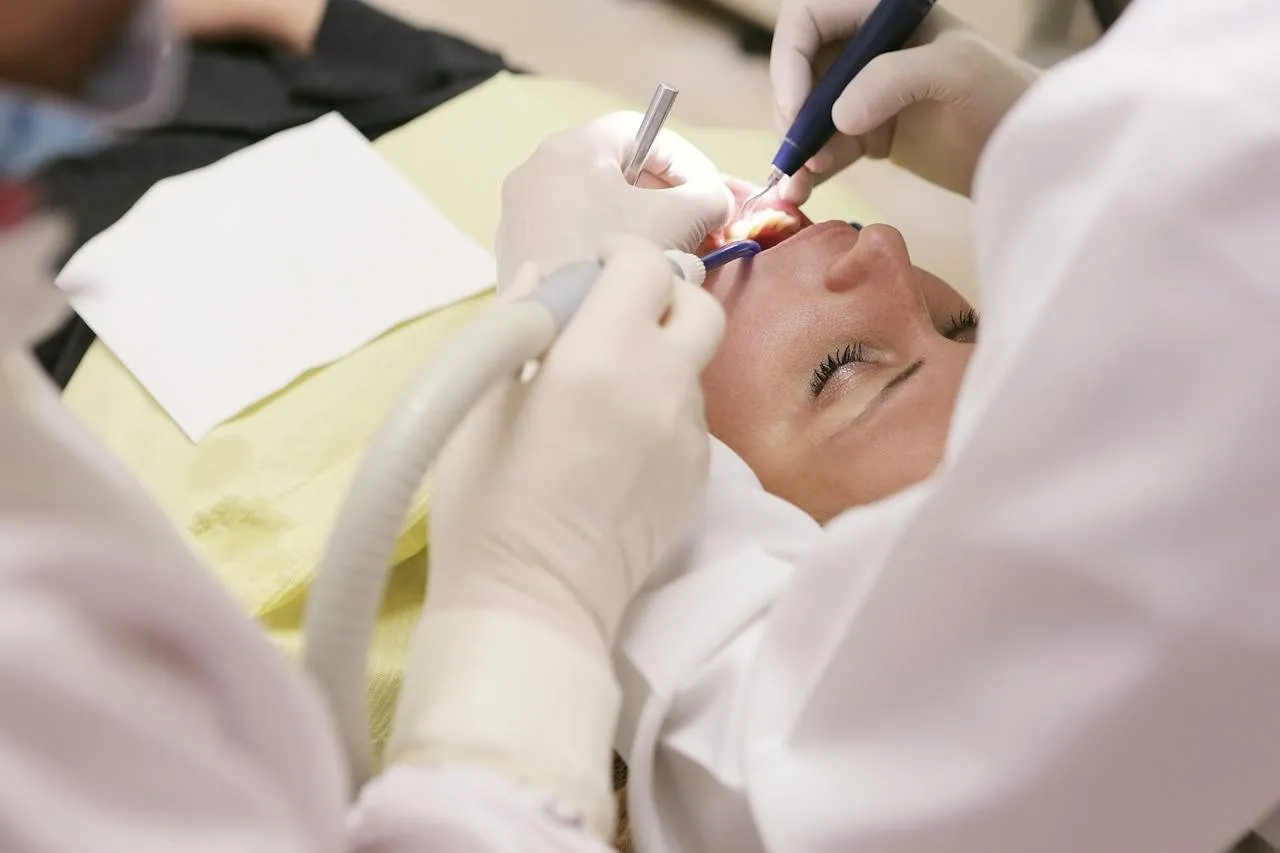The journey toward a fully restored smile often involves several intricate steps, particularly when significant bone loss has occurred. A critical preparatory stage for many patients is the dental implant bone graft procedure recovery. This intervention is designed to regenerate or augment the jawbone, providing a stable foundation for eventual dental implant placement. Understanding the nuances of this recovery period is paramount for patients, ensuring optimal healing and the long-term success of their dental restorations. This authoritative guide delves into the specifics of what to expect, how to manage post-operative care, and the factors influencing the healing timeline, offering comprehensive insights for those considering or undergoing this vital procedure.
Table of Contents
Understanding the Bone Graft Procedure
Bone grafting for dental implants is a surgical procedure that involves placing bone material in areas of the jawbone where volume or density is insufficient. This material, which can be sourced from various origins (autogenous, allograft, xenograft, or alloplast), stimulates the body’s natural regenerative processes, encouraging new bone growth. The primary objective is to create a robust and stable base, allowing for successful osseointegration once a dental implant is placed. Without adequate bone, an implant cannot properly fuse with the jaw, leading to potential failure.
Why Bone Grafting is Necessary
Bone loss can occur due to several reasons, including periodontal disease, trauma, tooth extraction, or long-term edentulism (missing teeth). When teeth are lost, the jawbone in that area no longer receives the necessary stimulation from chewing, leading to atrophy. For successful dental implant placement, a certain amount of bone height, width, and density is required. Bone grafting remedies this deficiency, enabling patients who might otherwise be unsuitable for implants to receive them. This proactive measure ensures the longevity and stability of the implant.
Types of Bone Grafts
The choice of bone graft material and technique depends on the extent of bone loss and the patient’s individual circumstances. Each type has distinct advantages and characteristics:
| Factor | Autograft | Allograft | Xenograft | Alloplast |
|---|---|---|---|---|
| Source of Bone | Patient’s own body | Human donor | Animal source (e.g., bovine) | Synthetic material |
| Healing Time | Faster integration | Moderate integration | Slower integration | Variable |
| Integration Success | Highest (live cells) | High | Good | Moderate |
| Cost | Variable (donor site surgery) | Moderate | Moderate | Moderate |
| Risk of Rejection | Lowest | Low (processed) | Very low (processed) | None |
Autografts: Considered the gold standard, autografts use bone harvested from the patient’s own body, typically from the chin, jaw, hip, or tibia. They contain live bone cells, enhancing regeneration and reducing the risk of rejection. However, they require a second surgical site.
Allografts: These are processed bone materials from human donors. They are carefully screened and sterilized to ensure safety and are widely used due to their availability and predictable outcomes.
Xenografts: Derived from animal sources, most commonly bovine (cow) bone. Like allografts, they are rigorously processed to be biocompatible and safe, acting as a scaffold for new bone growth.
Alloplasts: These are synthetic bone graft materials, often made from calcium phosphate compounds. They serve as a biocompatible framework that gradually resorbs as new natural bone forms.
The Dental Implant Bone Graft Procedure Recovery: Initial Phase
The immediate post-operative period following a dental bone graft is crucial for setting the stage for successful healing. Patients should anticipate a specific set of symptoms and adhere strictly to post-operative instructions. The dental implant bone graft procedure recovery begins the moment the surgery concludes, and meticulous care is essential to prevent complications.
Managing Pain and Swelling
Pain and swelling are common after bone graft surgery. Prescribed pain medications should be taken as directed to manage discomfort. Over-the-counter anti-inflammatory drugs like ibuprofen can also be beneficial, provided there are no contraindications. Swelling can be minimized by applying ice packs to the outside of the face, typically for 20 minutes on, 20 minutes off, during the first 24-48 hours. Elevating the head while sleeping can also help reduce swelling and discomfort.
Bleeding and Numbness
Light bleeding or oozing from the surgical site is normal for the first day or two. Gauze pads can be gently bitten on to control this, changing them every 30-45 minutes until bleeding subsides. Persistent heavy bleeding warrants immediate contact with the dental professional. Numbness in the lip, chin, or tongue may occur, particularly if nerve pathways were affected during the procedure. This is often temporary but should be monitored.
Dietary Restrictions and Oral Hygiene
During the initial recovery phase, a soft diet is mandatory. Avoid hot liquids and foods that require chewing, as these can irritate the surgical site or dislodge the graft material. Opt for cool, soft foods like yogurt, mashed potatoes, and smoothies. Rigorous oral hygiene is essential to prevent infection, but careful handling is key. Patients will typically be instructed to rinse gently with an antimicrobial mouthwash (like chlorhexidine) starting 24 hours after surgery, avoiding vigorous spitting or swishing, which can disrupt the delicate healing tissues.
Week-by-Week Recovery Timeline
Understanding the progression of healing can help patients manage expectations and adhere to their post-operative care plan effectively. The dental implant bone graft procedure recovery is a staged process, with distinct milestones and considerations at each interval.
Week 1: Initial Healing and Symptom Management
This week focuses on managing acute symptoms. Swelling will typically peak around 2-3 days post-surgery and then gradually subside. Pain should diminish with medication. Patients must maintain a strict soft diet and gentle oral hygiene. It’s crucial to avoid disturbing the surgical site, refrain from smoking, and minimize strenuous physical activity. Sutures, if non-dissolvable, may be removed towards the end of this week or early in Week 2.
Weeks 2-4: Continued Healing and Lifestyle Adjustments
By the second week, most acute symptoms should have significantly reduced. Patients may start to introduce slightly firmer foods, though still avoiding very hard or crunchy items directly on the surgical site. The focus shifts to continued gentle oral hygiene and allowing the bone graft to stabilize. Strenuous activities should still be limited. The graft material begins to integrate with the existing bone, forming a preliminary framework for new bone growth.
Months 1-3: Early Bone Integration
This period marks the critical phase of new bone formation. The graft material acts as a scaffold, and the body’s osteoblasts (bone-forming cells) begin to lay down new bone tissue. While externally the site may appear healed, internally, significant biological processes are underway. Patients should continue to be mindful of their diet and avoid any trauma to the area. Regular follow-up appointments with the surgeon are vital to monitor progress.
Months 4-9: Maturation and Readiness for Implant Placement
Full maturation of the bone graft can take anywhere from 4 to 9 months, or even longer in some complex cases like a sinus lift procedure. During this time, the newly formed bone densifies and becomes strong enough to support a dental implant. X-rays and possibly 3D scans will be used to assess the bone quality and quantity before proceeding with implant placement. The length of this phase is highly individual and depends on factors such as the graft type, surgical technique, and the patient’s overall health. Research indicates that successful bone regeneration is significantly influenced by host factors and the chosen biomaterials, with studies consistently showing high success rates for dental implants following appropriate bone augmentation procedures.
Factors Influencing Recovery and Success
Several factors can significantly impact the dental bone graft healing time and the overall success of the procedure. Awareness of these elements allows for proactive management and can help optimize the recovery trajectory.
Patient Health and Habits
Systemic Health: Underlying health conditions such as diabetes, autoimmune disorders, or compromised immune systems can impede healing. Well-controlled systemic diseases are less likely to pose significant risks, but thorough medical history evaluation is crucial. Patients with osteoporosis may also require special consideration.
Smoking: Smoking is a well-documented risk factor for surgical complications and impaired bone healing. Nicotine constricts blood vessels, reducing blood flow and oxygen supply to the surgical site, which is vital for new bone growth. Patients are strongly advised to cease smoking weeks before and throughout the recovery period.
Nutrition: A balanced diet rich in vitamins (especially Vitamin C and D), minerals (calcium, phosphorus), and protein supports bone regeneration and tissue repair. Hydration is also essential.
Oral Hygiene: Diligent post-operative oral hygiene, including prescribed rinses and gentle brushing, is critical in preventing infection, which can severely compromise graft integration.
Surgical Technique and Graft Type
The skill of the surgeon and the chosen bone graft technique play a significant role. Minimally invasive approaches can sometimes lead to faster healing. The type of graft material also influences the healing timeline, with autografts generally integrating faster due to the presence of living cells. The volume of bone grafted and the specific location within the jaw also impact recovery.
Post-Operative Care Adherence
Strict adherence to all post-operative instructions provided by the dental professional is perhaps the most critical factor within the patient’s control. This includes medication schedules, dietary restrictions, activity limitations, and oral hygiene protocols. Deviations can lead to complications such as infection, graft displacement, or delayed healing.
Potential Complications and When to Seek Help
While bone graft procedures are generally safe and successful, potential complications can arise. Prompt recognition and appropriate action are essential to mitigate adverse outcomes. Understanding when to contact your dental professional is crucial during the dental implant bone graft procedure recovery.
Signs of Infection
An infection at the surgical site can compromise the graft. Symptoms include:
- Increased swelling or redness that spreads beyond the initial area.
- Persistent or worsening pain, especially if accompanied by throbbing.
- Pus or foul-smelling discharge from the surgical site.
- Fever or chills.
If any of these symptoms appear, contact your dental professional immediately.
Graft Failure or Displacement
Though rare, the bone graft material can fail to integrate or become displaced. Signs might include:
- Visible bone graft particles in the mouth (small particles of graft material can sometimes be shed, which is normal, but large amounts or persistent shedding warrants concern).
- New onset of severe pain or unusual sensitivity around the graft site after initial improvement.
- Lack of expected healing progression during follow-up appointments.
Other Concerns
- Excessive Bleeding: While some oozing is normal, heavy, continuous bleeding that saturates multiple gauze pads within an hour should be reported.
- Prolonged Numbness: While temporary numbness is common, if it persists for several weeks or months without improvement, it should be discussed with your surgeon.
- Allergic Reaction: Though rare, signs of an allergic reaction to medication (rash, hives, difficulty breathing) require immediate medical attention.
CK Health Turkey: Your Partner for Dental Care
Navigating complex dental procedures like bone grafting for dental implants requires exceptional expertise and support. CK Health Turkey stands as a premier destination for international patients seeking high-quality dental care. Our commitment to utilizing advanced techniques, state-of-the-art facilities, and highly experienced specialists ensures superior outcomes for procedures such as bariatric surgery, plastic surgery, and comprehensive dental treatments. We understand the specific needs of patients traveling from locations like the United Kingdom, offering an unparalleled combination of medical excellence and cost-effectiveness. Our patient-centric approach means personalized care plans, transparent communication, and dedicated support throughout your entire treatment journey, from initial consultation through to the completion of your dental implant bone graft procedure recovery and beyond. We invite you to discover the difference of world-class medical tourism with CK Health Turkey. Contact us today for a consultation or visit our website to learn more about how we can help you achieve your health and aesthetic goals.
Price Comparison: Dental Procedures in Turkey vs. United Kingdom
Patients from the United Kingdom increasingly seek medical and dental treatments abroad, primarily due to significant cost savings without compromising on quality. Turkey has emerged as a leading destination for such procedures. Here is a comparison of typical costs for related dental services:
| Service/Item | Turkey Price (GBP) | UK Price (GBP) |
|---|---|---|
| Dental Implant with Bone Graft | £1,200 – £2,500 | £3,500 – £6,000 |
| Sinus Lift Procedure | £800 – £1,500 | £2,000 – £4,000 |
| Ridge Augmentation | £700 – £1,300 | £1,800 – £3,500 |
| Single Dental Implant (post-graft) | £400 – £700 | £1,800 – £3,000 |
| Consultation & Diagnostic Imaging | £50 – £150 | £150 – £400 |
*Prices are estimates and can vary based on complexity, clinic, and materials used.*
FAQs
How long does the dental implant bone graft procedure recovery take before implant placement?
The recovery time for a bone graft can vary significantly, typically ranging from 4 to 9 months. This period allows sufficient time for the graft to integrate with your natural bone and for new bone to form, creating a strong foundation for the dental implant.
Can I speed up the bone graft healing process?
While you cannot drastically speed up the biological healing process, you can optimize it by strictly following post-operative care instructions, maintaining excellent oral hygiene, avoiding smoking and alcohol, and ensuring a nutritious diet. Adequate rest and avoiding strenuous physical activity are also crucial.
What foods should I avoid after a bone graft?
Initially, you should stick to a soft, cool diet. Avoid hot, spicy, crunchy, or hard foods. Foods with small seeds or particles that could get lodged in the surgical site should also be avoided. Gradually reintroduce normal foods as your healing progresses and as advised by your dental professional.
Is it normal to have some bone graft material come out?
It is common for small, sand-like particles of bone graft material to be shed in the mouth for a few days after surgery. This is typically nothing to worry about. However, if you notice larger pieces, excessive amounts, or experience discomfort, contact your dental professional.
What are the success rates for dental bone grafts?
When performed by experienced surgeons and with proper post-operative care, dental bone grafts have very high success rates, often exceeding 95%. Factors like patient health, smoking status, and adherence to instructions play a significant role in these outcomes.
When can I resume normal activities after a bone graft?
Most patients can resume light, non-strenuous activities within a few days. However, strenuous exercise should be avoided for at least 1-2 weeks, as it can increase blood pressure and risk bleeding or dislodging the graft. Always follow your surgeon’s specific recommendations.
Will I need a second surgery to place the dental implant?
Yes, a separate procedure is typically required to place the dental implant after the bone graft has fully healed and integrated. This ensures the bone is strong and stable enough to support the implant effectively.



